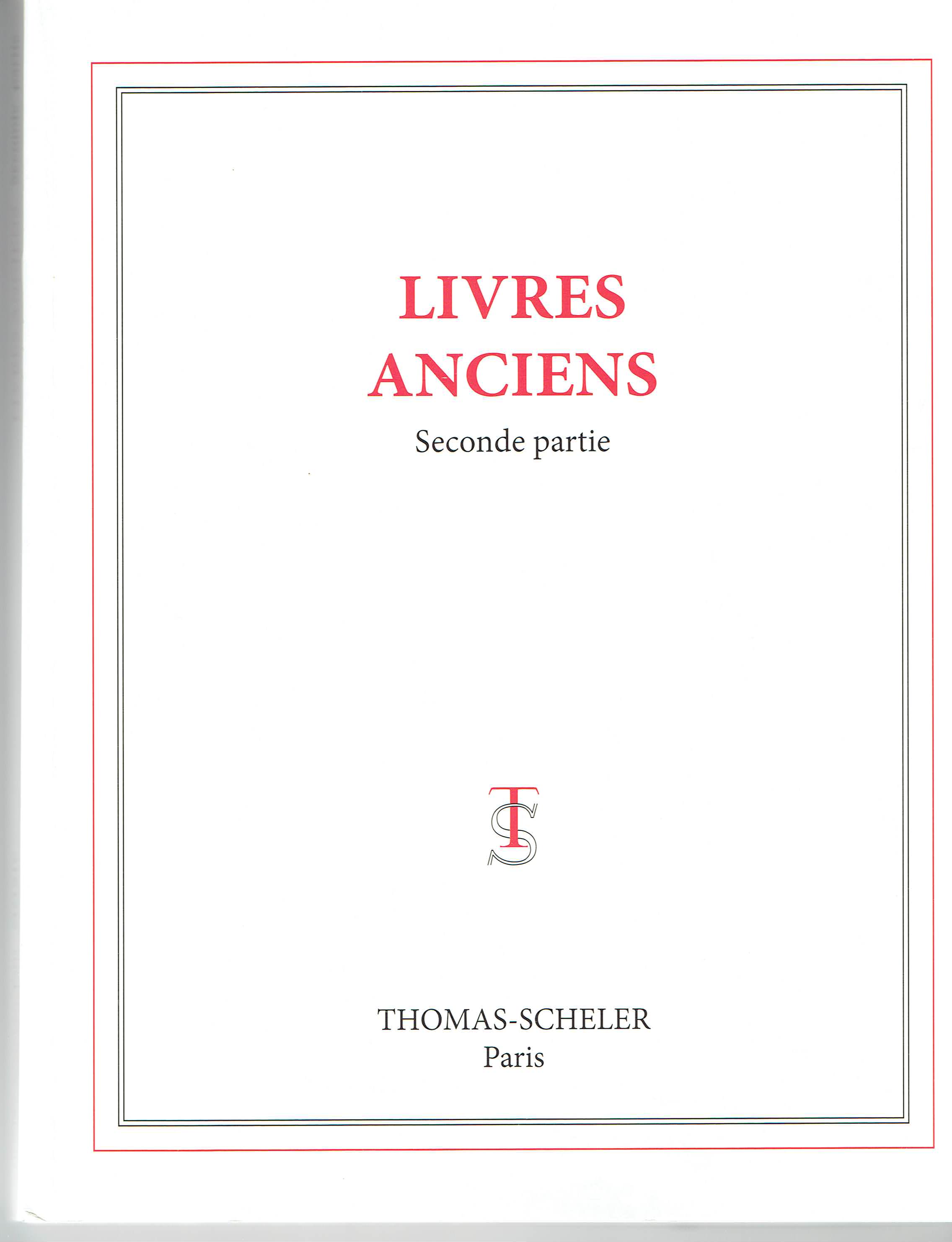Antiquarian Books from Librairie Thomas-Scheler
- by Michael Stillman

Antiquarian Books from Librairie Thomas-Scheler
Librairie Thomas-Scheler of Paris has issued Livres Anciens Seconde Partie (Antiquarian Books Second Part). A few months back, Thomas-Scheler printed Part I, which ranged alphabetically from A-K. This completes the alphabet, with authors from L-Z. These are all very old books, with numerous items of incunabula, along with some more “recent” works. These books are European in origin, mostly continental languages, including French, Italian, German, Spanish, and, naturally enough, Latin. English does make an occasional appearance. Here are a few of the books that make up the second part of this selection.
We will start with a book that was printed in England, though written in Latin to make it accessible to scholars of many lands. It is one of, if not the most important science text ever written – a second edition of Isaac Newton’s Philosophiae Naturalis Principia methematica… generally known simply as Principia. In it, Newton set down the rules of motion and gravity. Others had observed the motions of the planets and were able to predict their paths, but Newton was the one who took what Copernicus and Galileo had observed and set down the rules why. He was able to use these rules to construct the mathematical formulae for their movements, and apply those same rules and formulae to events on earth. Newton realized that the rules were universal, applying equally to earth and to the farthest reaches of the universe. Newton first published this book in 1787, and it quickly sold out. Two decades later, it was hard to come by, but with some prodding by his fellow mathematician and scientist Roger Cotes, Newton and Cotes began preparing this updated, second edition. It was published in 1713, and includes Cotes’ introduction. Item 94. Priced at €30,000 (euros, or approximately $41,618 in U.S. dollars).
Next is a very special, and melancholy edition of the Fables of Jean La Fontaine. La Fontaine was a 17th century French writer best known for his fables. Even a century later, they were required reading for the finest education in France. The provenance of this copy attests to this. It was printed by the famed Didot family of printers in 1788, “imprimé pour l’education de Monseigneur le Dauphin” (printed for the education of the Dauphin). The Dauphin was the heir to the King, the crown prince to use British terminology. In 1788, that was Louis Joseph, eldest son of Louis XVI. Louis Joseph was six-years-old at the time, in training for the most important job in France. It was not to be. Two terrible misfortunes for the royal family were well on their way by 1788. The nation was suffering from economic crises and the natives had become quite restless. The Revolution had not yet arrived, but the following year would see the storming of the Bastille and the forced ceding of some of the King’s authority. Four years later, the King was executed at the guillotine. However, Louis Joseph would be spared, in a manner of speaking, the fate of his younger brother, who succeeded him as Dauphin, dying in brutal captivity during the Revolution. Louis Joseph was a sickly young man in 1788. Unbeknownst to his family at the time, he suffered from tuberculosis. Louis Joseph died the following year at the age of seven, just two weeks before the first meeting of the unapproved National Assembly, and a few months before the storming of the Bastille. The Dauphin was a doomed child, for multiple reasons. Item 68. €8,500 (US $11,792).
This next book is an item of incunabula, a religious tract that was quite important in its day: Meditationes, by Juan de Torquemada (Johannes de Turrecremata). This is a 1498 edition by Stephan Plannck, who had access to some earlier woodcuts. It is these fine illustrations that make this theological treatise so desirable today. Torquemada was a Spanish Cardinal, well-respected at the highest levels of the Church during the middle of the 15th century. This is not surprising, as he was the primary voice for papal authority at a time when others sought to spread more of the Church’s power to those in the field. If the name Torquemada is familiar, it is more likely that of his nephew, Tomas de Torquemada, Grand Inquisitor during the Inquisition. Tomas is believed to have had some 2,000 people burned at the stake during what was a reign of terror for Spain’s Jews in the 1480’s and 1490’s. However, Juan de Torquemada, who died in 1468, should not be confused with his nephew, the former holding sympathetic views towards the people his nephew expelled and slaughtered. Item 136. €75,000 (US $104,050).
Item 91 is a classic in the field of dentures: Essay d’odontotechnie, ou dissertation sur les dents artificielles. Author Claude Mouton was a pioneer in dentistry, developing gold posts and crowns for a root canal, and recommending enameling them white to look natural. He also developed the clasp to hold false teeth in place. This is a work on false teeth, such as they were in 1746. €3,500 (US $4,856).
Librairie Thomas-Scheler may be reached at +33 (0)1 43 26 97 69 or basane@thomas-scheler.fr